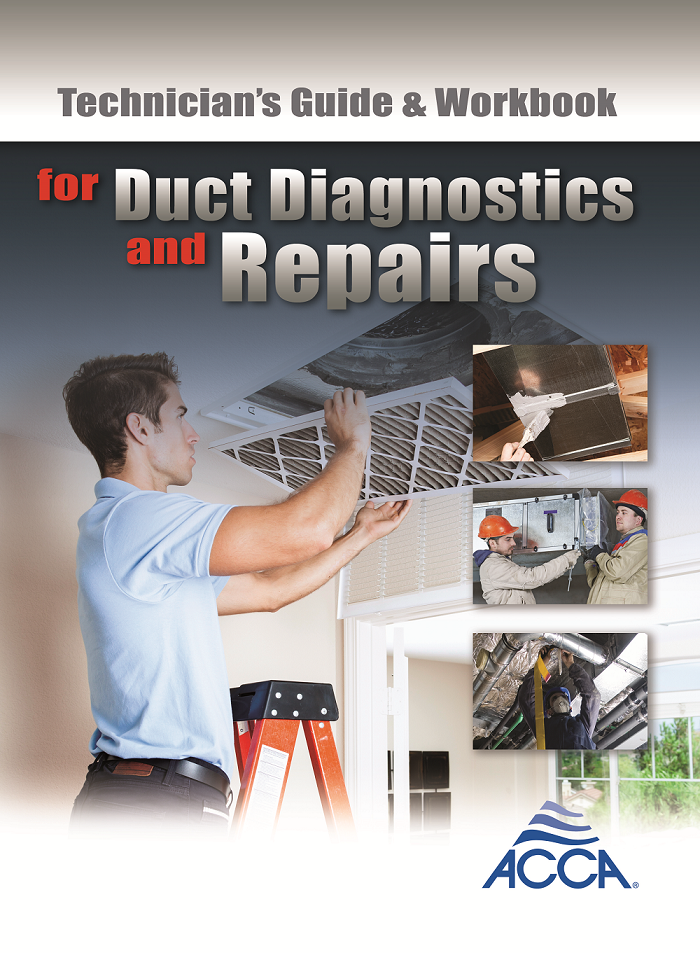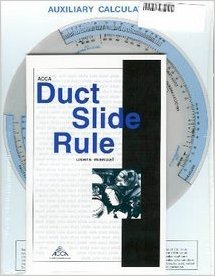Elastic banded, reusable plastic duct covers.
The practice of capping the ends of duct started more than 15 years ago. Over the past several years, there has been a substantial increase in the requirements for covering the ends of duct after fabrication and during transportation, storage and installation. Covering duct prevents dust and debris from accumulating in the duct system and creating a potential source of indoor air quality issues, including mold. Many architects, engineers and inspectors are requiring the practice of covering duct ends prior to arrival at job sites. Rolls of adhesive backed plastic and elastic banded duct covers are now a common tool for sheet metal shop workers and for field installers.
While covering duct ends in the shop is not specifically required by the US Green Building Council’s LEED v4 EQ Credit: Construction Indoor Air Quality Management Plan or the SMACNA IAQ Guidelines for Occupied Buildings Under Construction, it has become an everyday reality for most sheet metal fabrication shops.
Corresponding with the increase in covering duct ends is the substantial increase of using water-based duct sealants and water-based duct liner adhesives. Covering the ends of duct has created an unintended problem; moisture trapped inside duct. Many contractors have encountered duct sealants and duct liner adhesives that can take weeks to cure, duct sealants that are failing pressure tests, white rust and even beads of condensation collecting on the plastic films. In many cases, the inside of covered duct is becoming the sheet metal industry’s equivalent of a terrarium. There are strategies for mitigating or even overcoming these problems.
Duct sealant strategy
Duct sealants cure by evaporating water. When the humidity inside covered ducts reaches its saturation point, the curing process stops. Tightly sealed ends can create conditions where a duct sealant can take three weeks or longer to cure rather than the typical 24-48 hours. But there are strategies to increase the chances of success:
Seal duct as early as possible in the manufacturing process and keep uncovered for as long as possible. Seal early, load late. If possible, set manufacturing schedules to fabricate duct to be covered early in the day and seal as quickly as possible. The more water that is evaporated in the shop, the less water that will be trapped on the inside of wrapped duct.
Toolbox Tips
“The BrushBeast offers a big increase in power that can handle heavy build up within any air duct system while still remaining portable and compact enough to move throughout a home or business,” explains Bob Elledge, president and CEO of Rotobrush International. “We are always looking for solutions to make the air duct cleaning process easier for contractors, we’ve updated the carrier to provide more space for accessories and the necessary tools to complete the job. It adds more convenience for the contractor, they can quickly access tools without going back and forth to the truck.”
Circulating air is the best way to drive off water and decrease dry time. Fans placed at a distance that moves air over open ended duct is the best method to avoid moisture problems. Air should be moving at the speed of a breeze and not at high speeds directly at the duct sealant. High speed air blown directly at the sealant will cure the top layer, trapping moisture in the uncured sealant below the surface.
Apply sealant correctly. Duct sealant should be applied to the thickness of a nickel, more is not better. Inside 90 degree angle seals are often caulked, back brushing the caulk bead will create more surface area which will reduce cure time. Airless sprayed duct sealants also cure faster than traditionally applied sealants.
Use a quality sealant. Duct sealants cure outside-in, meaning the outside films over first and water evaporates from underneath the surface to fully cure. Significant problems can occur by using poor quality, economy duct sealants especially when sealing the inside of right angle joints that are found in longitudinal rectangular duct and fitting seams. Many economy duct sealants will soften or even reactivate when exposed to moisture. Water evaporating from under the curing top film will cause this top layer to loss strength, resulting in tearing. Contractors often think that a duct sealant has cured and cracked, often times the sealant has torn during the curing process. Using a premium grade, water-resistant, high polymer (rubber and glue) content sealant will eliminate this problem.
Lined rectangular duct with water-based adhesive
Just like duct sealants, water-based duct liner adhesives and edge coatings cure by evaporating water and can create similar issues. And like duct sealants, there are ways to reduce trapped moisture issues:
Use the correct amount of adhesive. This is one of the most common mistakes sheet metal shops make. If a shop is experiencing adhesive running down the inside of lined duct or experiencing white rust while nesting L shaped rectangular, the shop is almost certainly applying too much adhesive. Water-based duct liner adhesives, especially quality adhesives, require a light coating of adhesive on the metal. Less adhesive means less water to evaporate.
Use forced air and plan ahead. Apply early and load late, just like water-based duct sealing.
Use a quality adhesive that is water resistant. Many adhesives will reactivate after curing when exposed to water, i.e. condensation. The contractor runs the risk of losing adhesions should the duct liner adhesive get watered down by condensation. A loss of adhesion will risk a contractor’s ability to comply with SMACNA’s requirement of duct liner adhering to 90% of the surface. Fully curing adhesive on bare metal and exposing to water is the simplest and best way to determine water resistance.
The use of plastic wrap has increased dramatically and is continuing to increase. The awareness and demand for indoor air quality makes it almost certain covering duct ends will be with our industry well into the future. Incorporating these shop strategies into the manufacturing process will lessen and, in some cases, eliminate most trapped moisture related problems.
Notes from NADCA
National Air Duct Cleaners Association president and chairman of the board, Richard Lantz, ASCS, CVI, clears the air on some frequently asked questions about duct cleaning standards. On sealing air leaks … According to the NADCA Standard, Section 4, Cleaning & Restoration Procedures, “assessment, cleaning and restoration of HVAC System Components does not include the sealing of air leaks within duct systems or HVAC equipment.”

Richard Lantz
On cleaning completely sealed HVAC systems … The HVAC system is the building’s respiratory system and continually circulates airborne particulates from the occupied space through the HVAC system. Even with filtration, contaminants will pass through the filters and build up over time and require cleaning to maintain cleanliness and performance.
On the use of chemical cleaning agents in HVAC systems … The application of chemicals in an air conveyance system is acceptable only when the product is legally approved for the application for which it will be used. At this time, the EPA has not accepted any disinfectant, sanitizer or fungicidal products for use in the ductwork of HVAC systems. However, some of these products are accepted for use in other parts of HVAC systems.
It is a violation of federal law to use a product in a manner inconsistent with its labeling. That is why we advise our members to reference the white paper and to not to apply disinfectant, sanitizer or other antimicrobial products to treat HVAC systems if such products do not include specific directions for HVAC use on the product label. EPA-registered pesticides must be used in compliance with the product’s EPA-accepted label.

On ozone applications in HVAC Systems … Contractors that treat with ozone must assure that applications do not occur in buildings that are inhabited or occupied (humans, pets, etc.) and that the treated areas are well ventilated prior to re-entry.
Currently no regulations exist regarding how to determine when it is safe to re-enter a building after ozone treatment.
The EPA has declared that there is evidence to show that at “concentrations that do not exceed public health standards, ozone applied to indoor air does not effectively remove viruses, bacteria, mold, or other biological pollutants.














